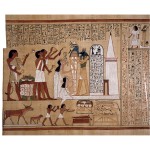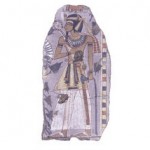
Book Review: A Companion to Ancient Egypt
It is not within the scope of this short article to review the entire two-volume edited collection of papers in A Companion to Ancient Egypt edited by Alan B. Lloyd, particularly as I have only read around 45% of the papers published within it. On the other hand, I have been using the two volumes quite extensively recently and thought that it might be useful to any readers who are considering splashing out the eye-watering sum for this encyclopaedic work if I offered some thoughts on the subject as a whole, rather than looking at individual articles. I have read at least one article in every section. [more…]

The Birth Bower and Mamissi-Chapels in Ancient Egypt
Kate Phizackerley introduces womens’ experience of child birth in Ancient Egypt and the special birth bowers assigned to this important event. She traces how this involved into a special type of chapel, called a mammis and considers what implications might be drawn from one scene depicting Akhenaten and his queen, Nefertiti. Along the way she covers who might attend a birth and touches on some of the medical texts. [more…]
Documentary Review: The Man Who Discovered Egypt
Review by Andrea Byrnes. In Magazine Articles on Egyptological. april 3rd 2012. The Man Who Discovered Egypt 28th March 2012, BBC4 Cast: Presenter – Chris Naunton Director – Deborah Perkin Executive Producer – Christina Macaulay Producer – Deborah Perkin Introduction The man in ‘The Man Who Discovered Egypt’ was Sir William Flinders Petrie, […] [more…]
Edition - February, 2012
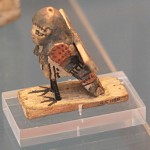
Editorial – Journal Edition 3 and Magazine Edition 4
Welcome to our latest editions of the Journal and Magazine sections. There is a great mixture of topics, which we hope will provide something for everyone. In the Journal section Kate Phizackerley has brought together the results of two excavations in the tomb of Horemheb in the Valley of the Kings, separated by nearly a century, […] [more…]
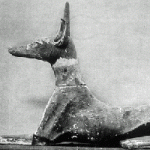
Introduction to the Contents of Tomb KV57 (Horemheb)
KV57, Horemheb’s royal tomb in the Valley of the Kings is famous for its bright decoration but it has yielded a large number of artefacts. The tomb has been excavated twice by Theodore Davis after he discovered the tomb in 1908 and a century later by Geoffrey Martin. This paper brings together findings of both excavations to show that the tomb originall contained an assemblage matching or surpassing that found in KV62, the tomb of Tutankhamun [more…]
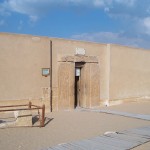
Notes in the margins of the scene termed “rendering accounts” in the mastaba of Mereruka
The mastaba of Mereruka, called Meri, is located at Saqqara, near the pyramid of Teti, next to the pre-existing tomb of his colleague, Kagemni. Both acceded to the post of vizier during the reign of Teti, at the beginning of the 6th Dynasty. The vast building is divided into three parts, sheltering, besides the deceased, his wife Seshseshet (daughter of Teti) and their daughter Meryteti. Those who visit the tomb cannot fail to notice, at the beginning of the circuit, a scene decorating the lower part of the left wall of the long passage that leads to section A reserved for Mereruka. [more…]
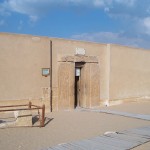
Notes en marge de la scène dite «de reddition des comptes» dans le mastaba de Mererouka
Le mastaba du Mererouka, dit Meri, se situe à Saqqara, à proximité de la pyramide de Teti, jouxtant la tombe préexistante de son collègue Kagemni. Tous deux ont accédé au vizirat sous le règne de Teti, au début de la VIe dynastie. Le vaste bâtiment se divise en trois parties, hébergeant outre le défunt, son épouse Seshseshet (fille de Teti) et leur fille Meryteti. Ceux qui ont visité la tombe n’auront pas manqué de remarquer, en début de parcours, une scène décorant la paroi gauche, dans sa partie inférieure, du long passage menant à la section A réservée à Mererouka. [more…]
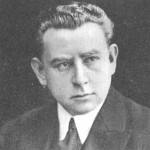
Arthur Weigall: A Man Out Of Time – Part 1
In this article, I will explore the contributions that Arthur Weigall (figure 1) made to the field of Egyptology. I knew of Weigall’s involvement as a reporter during the excavation of Tutankhamen’s tomb by Howard Carter, and his open criticism of Carter and Carnarvon’s exclusive reporting agreement with the Times, but later discovered that he had already had an impressive career in Egypt. That in fact by the time he came to cover Carter’s discovery his career in Egyptology was already over and he had not returned to Egypt in over nine years. [more…]
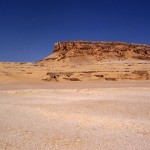
Early Coptic Church and Monastic Architecture. The Link with the Pharaonic and Greco-Roman Past.
Although the religions of ancient Egypt and Coptic Christianity are fundamentally different, there are a number of parallels and similarities between the internal arrangements and layouts of the Pharaonic temples, and those of the later Coptic churches. Both Ancient Egyptian temples and Coptic churches were places of worship, each containing space designed to incorporate symbolic elements and to allow for the performance of specific activities. They were built according to certain formulaic conventions that dictated how that space should be employed by different levels of the clergy and the public. [more…]
 By Andrea
By Andrea